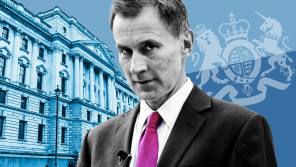

But I live on London’s Brick Lane and my most consistent pricing metric is the price of a samosa in the shop below my flat. And that price has now increased from 45p to 55p. Aside from the inconvenience of being unable to simply hand over a 50p coin in exchange for a steamy little pouch of hearty flavour, this price increase is a confirmation of our second investing principle: if cash were ever king, it has certainly been dethroned now.
Rising prices in Britain and across the world mean that holding cash in piggy banks, under the mattress, or in deposit accounts is going to generate a lower real return than before. As consumers, we want to be able to buy the things we want and need next month, next year or in retirement – and an inflation rate above 0 per cent means the price of an item is higher now than it was last year or last month.
If the positive inflation rate carries forward, this means prices next year and next month will be higher than they are now. At the very least, we want our purchasing power to remain steady. UK inflation is currently 1.2 per cent and is expected to be 2.4 per cent next year, which means holding all one’s assets in cash is going to reduce purchasing power in the future.
Investors often think of cash as a safe haven in volatile times, or even as a source of income. But the current era of ultra-low interest rates has depressed the return available on cash to near-zero – leaving cash savings vulnerable to erosion by inflation over time.
When base interest rates were higher, bank deposits could have supplemented an investor’s income stream. Due to monetary policy measures, the Bank of England has kept bank rates at extremely low levels. This is beneficial for companies and consumers looking for affordable loans, but it does not help savers.
A longer time horizon illustrates cash returns even better. In this week’s chart, £1 is invested in 1899 (should anyone have been around then to make this investment, please let me know as you are proving the life expectancy discussion as seen in my last column).
Over subsequent years, cash has generated a total return of £3 in inflation-adjusted terms. Long-dated Gilts have generated £6 in real terms – double the return. One pound invested in equities (the FTSE 100) in 1899 has returned a real return of £340 (618.2 samosas at the 55p price).
Equities clearly provide the best real return, which makes sense. As prices increase, so do corporate revenues and earnings, which boosts firms’ share prices. Of course, equities are far more volatile than bonds and cash, so there are considerations.
We’ll discuss volatility in a few weeks, but given the comparisons of £3, £6 and £340 real returns, one fact is blatantly clear: parking all one’s money in cash for a long period of time means missing out on huge return opportunities elsewhere.
The game might be tough and require a hands-on approach, but playing is better that sitting it out on the sidelines.
Nandini Ramakrishnan is global market strategist of JP Morgan Asset Management



